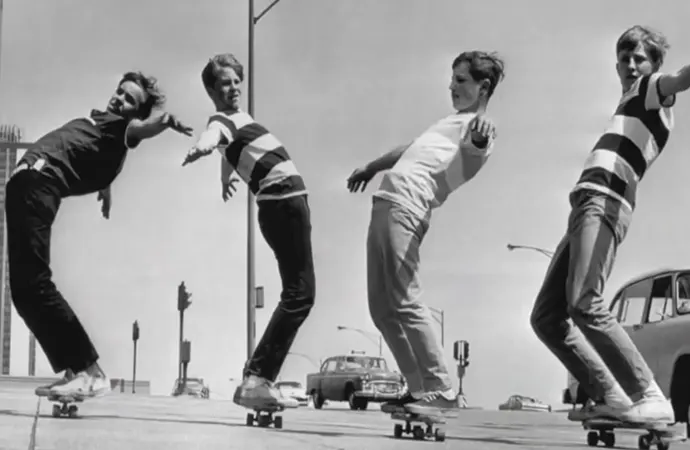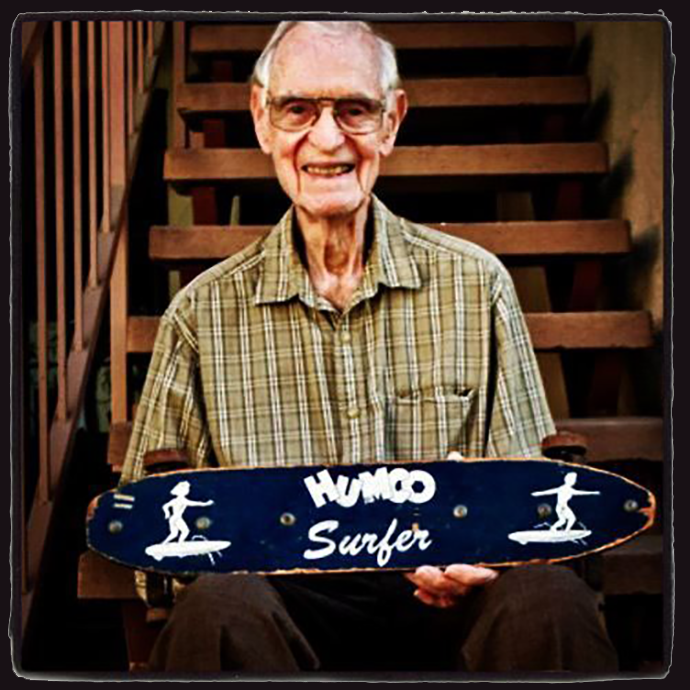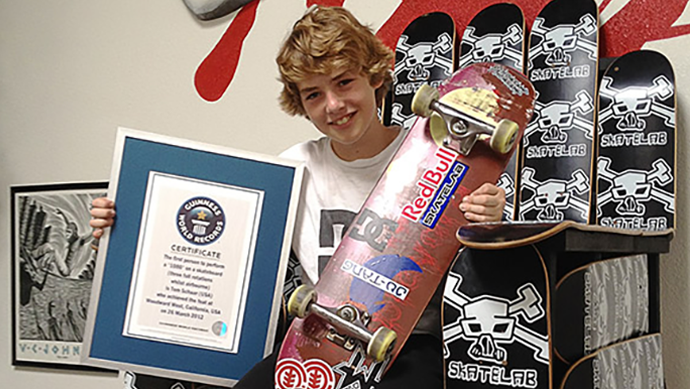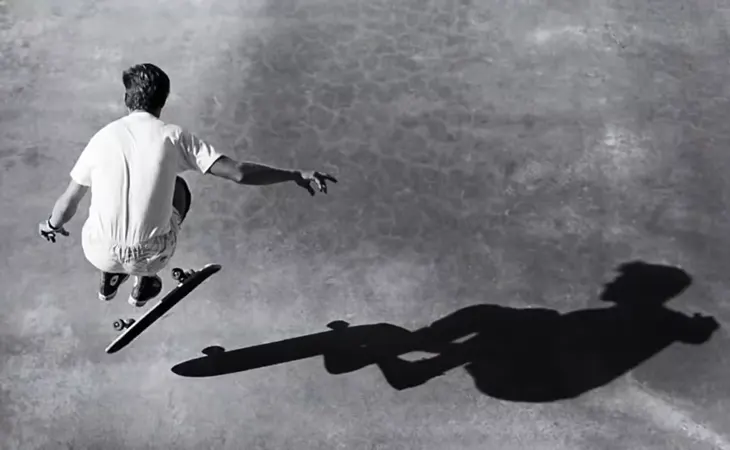History of Skateboarding: From Born (1600s) To Today
Anyone who’s ever watched the classic film Dogtown and Z-Boys knows that skateboarding has a rich and diverse history. But how did it come to be? What was happening in the world at the time?
Skateboarding was invented in the 1950s. But its popularity didn’t take off until the 1970s and 80s when skateboarding’s profile skyrocketed due to stars like Tony Hawk. Still, it had a fair share of pioneers before then, dating back multiple eras.
In fact, the earliest written evidence of fun skating dates back to 1180. Young men would skate on ice with lances and shields.
This history of skateboarding will take you through the biggest breakthroughs in skateboarding equipment and technique. I’ll detail each advancement in skateboarding from the 1600s to what it is today.
Let’s Jump into The History of Skateboarding
Early 1600-the 1760s
Skateboarding dates back to the 17th century. The Dutch, for instance, skated on frozen canals in the winter as early as the 13th century. In fact, the Dutch are the pioneers of skating on the edges.

Later, roller skates were invented as a summer alternative to ice skating. These primitive roller skates featured wooden spools attached to a platform to allow travel in warmer weather.
- 1742: The first skating club is set up in Edinburg, Scotland
- 1760: Belgian Joseph Merlin is credited with the invention of inline skates. These curler skates had iron wheels.
1760-1863s
1818:
A group of roller skaters in Berlin used inline roller skates in ballet for ice skating moves. The moves were inspired by the premier German ballet, Der Maler oder die Wintervergnügungen (The Artist or Winter Pleasures).
1819:
The French inventor Monsieur Petit bled patented a three-wheeled inline skate in Paris. His design consisted of two-to-four rollers (copper, ivory, or wood) attached to a wooden soleplate. The plate was then fitted to a skater’s boot. However, the wheel construction didn’t quite simulate ice skating moves; it kept slipping on hard surfaces.
1823:
Robert John Tyers patents the first inline skate called a “Rolito.” It comprised five wheels in a row with smaller wheels on each end for turning and maneuvering. But unlike the modern inline skate, it didn’t follow a curved path.
1828:
Jean Garcin patents the ‘Cingar,’ a three-wheel inline skate. In order to teach skating, Garcin established a skating rink. He also authored a book titled Le Vrai Patineur (‘The True Skater’). Due to the high number of patrons who had skating injuries, Garcin was forced to close his rink.
1849:
Louis Legrange builds the first successful inline professional skate to simulate ice skating in the French Opera ‘Le Prophete.’ Nevertheless, skaters found it hard to stop or maneuver.
1850:
American Edward Bushnell makes steel blades for skates, allowing for more complicated movements on the ice.
1852:
English J. Gidman applies for the first roller skates with ball bearings. But it wasn’t until 30 years later that they came to use.
1857:
The first public roller rinks open in London. This newfangled way to get around quickly caught on, and soon people were strapping roller skates to their shoes and zipping around town.
See also: Top 7 Best Skate Shoes 2024: Unfiltered Tested Review
1859:
Jackson Haines, the pioneer of modern figure skating, invents the Woodward skate with four vulcanized rubber wheels on each frame. It provided better traction than iron wheels, especially on a wooden floor. However, it still had maneuvering problems.
1860:
Reuben Shaler from Connecticut patents a Parlor Skate to solve the maneuverability problem. It resembled today’s inline frames, with four wheels attached to a hanger via pins. Unfortunately, it never caught on.
1863-1953s
1863:
James Plimpton patents quad skates with two front and two rear wheels. The pivoting wheels could turn independently of the frame, providing greater control and ease of use than the inline skates.

1908:
Figure skating is contested as an Olympic sport in London, United Kingdom.
1930:
The ‘Scooter Skate’ with a metal rocket ship-shaped board hits the market. It featured 3 metal wheels and allowed usage with or without a handle. However, it didn’t allow steering.
1935:
John L. Wintz creates a Lucite skate wheel. He also created the world’s first rubber wheel, featuring brake fiber with rubber inlays. It opened up new possibilities for skateboarders – traction, speed, and durability.
1936:
John L. Wintz starts the Sure-Grip Skate Company to manufacture rubber inlay wheels for conventional roller skates. The Roller Derby Skate Corporation is also founded in the same year.
1945:
Skeeter Scooter, a four-wheeled aluminum skate, is created. It was the first to adopt the “truck” concept. The steering axles allowed easy turning by shifting weight. Also, the design had a removable handle – sort of like training wheels to help with balance.
1953-1963
1956:
Tim Tuthill (a Los Angeles surfer) and his friends build the first bun boards. He claims that skateboarding started in front of his house in Hermosa Beach.
1957:
The debut of the Street King, the first sized, outdoor, booted roller skate in the world by Roller Derby. With more than 65 million pairs sold globally, the model continues to be the most popular roller skate of all time.
1958:
A man named Albert C. Boyden patented one of the earliest recognizable skateboards. The Humco Surfer, as it was called, quickly became popular.

1959:
The word “skateboard” is used for the first time in the New York Times print. The article “The Week in Review,” requested that skateboards be outlawed due to the growing list of accidents. The same year, Roller Derby Skate Corporation launched the world’s first mass-produced skateboard.
1960:
Skateboarding I grows in popularity. Downhill slalom and freestyle skating have emerged as popular disciplines.
1962:
Val Surf, a surf shop in Hollywood, sells the first self-produced skateboards.
The Euba company in Germany manufactures a beefy inline skate, the “Euba-Swingo,” It was specifically designed for dry-land figure skating training.
Patterson Forbes makes full boards with more developed trucks.
1963:
Larry Stevenson develops Makaha Skateboards in his garage in Venice Beach.
The first advertisement for skateboards appeared in Surf Guide Magazine. Stevenson, the publisher, was one of the first to recognize the potential of this new sport and helped to popularize it through his publication.
Larry Stevenson organizes the earliest skateboard exhibitions at the Pier Avenue Junior High School, Hermosa Beach, with Jim Fitzpatrick becoming the first member of the Makaha exhibition team.
Skateboarding has reached peak popularity, with brands starting to hold skateboarding competitions.
1963-1983
1964:
Herbie Fletcher becomes the first person to ride a skateboard in an empty swimming pool.
Skee Skate runs a full-page ad in the Quarterly Skateboarder, the first American skateboarding magazine. It’s possibly the first commercially produced skateboard.
Pop singers Jan and Dean release the song “Sidewalk Surfin.”
“Skateboarding is not a crime!” the New York Times reports. Transportation Committee and Burbank Traffic say skateboards are no more dangerous than bicycles or wagons. They recommend that the city council allows skateboards within the city limits, except in the CBD.
1965:
The Quarterly Skateboarder is renamed Skateboarder Magazine in August.
The first American Skateboard Championship is held at La Palma Stadium in Anaheim, California. The event was broadcast on ABC’s Wide World of Sports and featured 280 competitors worldwide. John Freis won the event.

On May 14, Life Magazine puts Patti McGee, the first female national skateboarding champion, in the national spotlight.
On September 3, Surf City, the first skatepark in the world, opens for business in Tucson, Arizona.
On September 26, skateboarding popularity took a sudden dive. Many assume it was just a fad.
California Medical Association terms skateboarding as a “hazardous recreational activity.”
1966:
Surfer’s World, the most famous early park, opens in summer. Vita-Pakt and Hobie sponsored contests at this newly opened park.
On March 16, Paul Van Doren and three partners opened up the first-ever shoe store at 704 E. Broadway in Anaheim.
In May, director Noel Black won a Technical Grand Prize and a Golden Palm for Best Short Film at the Cannes Film Festival. This is after rigging a camera to follow skaters at street level.
1971:
Makaha Skateboards founder Larry Stevenson received a patent for the kicktail (introduced in 1969) and double kicktail. A kicktail is the bent-upwards end of a skateboard.
1972:
Frank Nasworthy invents urethane wheels, the first modern skateboard wheels. Urethane wheels spark new interest in skateboarding.
1975:
The Zephyr team impresses the crowd with new aggressive, innovative styles of skateboarding at The Ocean Festival – a traditional freestyle and slalom contest held in Del Mar, California. The event catapults skateboarding into the public eye.
They were the first skateboarders to perform “vert” skating (skating on ramps), half-pipe skating, and freestyle skating, which they showed off in competitions. The Zephyr team’s “vert” style would become the basis of modern vert skating, and they were responsible for bringing vert skating into mainstream popularity in the early 1980s.
On September 20, Tom Sims won the first Hang Ten World Skateboard Championship event at the Sports Arena, Los Angeles.
1975: Russ Howell publishes an early book on skateboarding Techniques, Safety, and Maintenance.
1976:
Florida builds the first public skatepark, The Bro Bowl. It’s among the last remaining skateboard parks of the 70s.

Jack Smith, Jeff French, and Mike Filben do the first skateboard push across the US from Lebanon, Oregon, to Williamsburg, Virginia. The journey took 32 days.
The first German skateboard center opens in Munich. It hosted the inaugural German skateboard championships.
1977:
Skateboard Industry News gets published for the first time in Los Angeles. This publication would help bring attention to the sport and its athletes, making it more mainstream.
Tom Stewart from Encinitas, California, Invents The Rampage, a skateboarding half-pipe made from wood. The 8 feet wide skateboard ramp is the world’s first half-pipe.
1978:
13-year-old Alan Gelfand invents a new trick known as the “ollie” – a move that would change skateboarding forever. The ollie is a move where the skater pops the board into the air and then lands back on it- no hands required. This one simple move opened up a new world of tricks and combinations one could perform on a skateboard.
Skateboarder Magazine switches from bi-monthly to monthly.
The United States has 200 skateparks, a significant increase from the mere handful that existed in the early 1970s.
1979:
The United States boasts 400 skateparks.
Skateboarding experienced a sharp decline in popularity. This was due in part to the rise in insurance rates for skate parks, which made it difficult for many of them to stay open.
1980:
Skateboarder Magazine closes its doors for the second time. This was a huge blow to the skateboarding community, as Skateboarder Magazine was one of the most popular and well-respected publications at the time.
1981:
Eric Swenson and Fausto Vitello launch Thrasher, a skateboard magazine with the motto, “Skate And Destroy.”
1982:
Tony Hawk wins his first freestyle skateboard contest at the Del Mar Skateboard Ranch. This was a big deal because it showed that skateboarding was becoming a legitimate sport. Plus, it gave Tony the confidence to keep skating and become one of the most famous skateboarders in the world.

1983:
Tommy Guerrero, one of the first street-style skateboarders, wins the first-ever freestyle contest at Golden Gate Park, San Francisco.
Transworld Skateboarding Magazine gets published for the first time. The magazine’s motto “Skate and Create” perfectly encapsulates the spirit of skateboarding.
Joe Lopes from the San Francisco East Bay community of San Leandro hosts the Joe’s Ramp Jam – the first backyard pro-jam-format contest.
1984-2000
1984:
The Bones Brigade team (Tony Hawk, Mike McGill, Stacy Peralta, Steve Caballero, Rodney Mullen, and Lance Mountain, among others), release what many consider to be the first modern skate video: The Bones Brigade Video Show.
1986:
Mark Gonzales, the man behind kickflips, skates handrails for the first time.
1987:
Thrashin’, an American skater drama film, is released.
1989:
The release of the movie “Gleaming the Cube.” Christian Slater’s portrayal of a skateboarding teenager helps make skateboarding more acceptable to the mainstream.
The first episode of The Simpsons airs on Fox. It’s an inspiration for Bart’s skateboarding stunts, where he ollies down the steps of his school, sidewalk surfing all the way home.
1992:
Tony Hawk forms Birdhouse Skateboards, along with Blitz Distribution.
1995:
The first edition of the X Games was held in Providence and Newport, Rhode Island, and it was a huge success. The X Games are an annual extreme sports competition that features skateboarding, BMX, and other action sports.
1998:
Tony Hawk launches his own clothing line, Hawk. Just two years later, he sold it to the major action sports brand Quiksilver.
1999:
Tony Hawk becomes the first person in history to land a 900-degree skateboard trick. During the X Games at San Francisco’s Pier 30.
The release of the skateboarding video game series “Tony Hawk’s Pro Skater.” This electronic game was originally for PlayStation. However, it was later ported to Dreamcast, Nintendo 64, N-Gage, and Game Boy Color.
2000:
Richard Carrasco completes a record-breaking feat – a continuous 142 360s in Santa Ana, California. His accomplishment impressed and inspired many other skateboarders to push themselves to their limits.
2000-2010
2002:
Srikala Kerel Roach and Bryan Chin decided to create a holiday for skateboarders – the All-Star City Skate Jam; renamed Go Skate Day in 2004. The idea was that it would be a day when skaters could come together, celebrate their favorite sport and connect with each other.
2004:
The IASC, a non-profit organization that represents the skateboarding industry, announces June 21 as Go Skateboarding Day (GSD). The date was chosen because of its distinction as the first day of summer and the longest day of the year.
On August 8, Danny Way set the world record for the longest skateboard ramp jump. He cleared a 79-foot (24 meters) gap on a mega ramp at the X Games in Los Angeles, California.
2007:
Dyrdek claims the Guinness World Record for “longest boardslide” of 100 feet and 5.75 inches (30.62 meters) on an episode of MTV’s The Rob & Big Show.
2008:
Zach Kral set a world record by performing 1,546 consecutive kickflips on a skateboard. The event (Fuze Kickflip Challenge) was held at 4 Seasons Skate Park in Milwaukee.
Kiwi rider Rob Thomson completes the world’s longest skateboarding journey from Leysin, Switzerland, to Shanghai, China. In all, he completed the journey in 3 months and 4 days, giving skateboarding lessons and demonstrations in several cities and countries along the way.
2009:
Bruce Logan, Tony Hawk, Tony Alva, and Danny Way are inducted into the Hall of Fame in 2009. The nominees were selected by the International Association of Skateboard Companies (IASC). These four men were pioneers in the sport of skateboarding and helped to shape the culture that surrounds it today.
Rob Dyrdek and Joe Ciaglia enter the Guinness World Record for the largest skateboard, 12.5 times the size of a standard skateboard. It measured 11.14 m (36 ft 7 in) long, 1.10 m (3 ft 7.5 in) high, and 2.63 m (8 ft 8 in) wide.
2010:
Rob Dyrdek launches a new skateboarding league, the Street League Skateboarding (SLS). The goal was to raise the profile of street skateboarding worldwide. The first season of the SLS featured three stages in Arizona, California, and Nevada.
2010-2021
2011:
19-year-old Aldrin Garcia sets the world record for the highest ollie of 45 inches (114.3 centimeters) at the Maloof High Ollie Challenge, snapping the previous world record of 44.5 inches by Danny Wainwright.
2012:

Tom Schaar from Malibu lands the first iconic 1080 trick on a Mega Ramp at Woodward West action sports camp. The 12-year-old Californian prodigy performed the stunt on an 8-meter-high quarter-pipe specially built for the world record attempt.
2015:
American Danny Way performs the highest air on a skateboard (quarterpipe) at 7.772 m (25 ft 6 in) in Alpine, California.
2016:
Skateboarding is to make its Olympic debut in Tokyo 2020, as announced by the International Olympic Committee (IOC). The event would feature a street and park competition at the Ariake Urban Sports Park.
2017:
The largest skateboard parade on June 21 was by 1,108 participants in Metro Manila, Philippines.
2018:
Nicholas Drachman set the world record for the most consecutive ollies landed in a row. The impressive feat in Providence, Rhode Island, totaled an impressive 302 ollies.
2019:
Mitchie Brusco, a professional skateboarder, makes history on August 3 at the X Games 2019. He became the first person to land a 1260 rotation, which is 3.5 rotations in the air.
2020:
Brazilian skateboarder Gui Khury performs the first-ever 1080 on a vert ramp. The historical achievement was at the X Games in Minneapolis. Prior to this, the 900 was the highest vert ramp by Tony Hawk in 1999.
2021:
Skateboarding makes its debut as an official sport at the Tokyo 2020 Olympic Games. Yuto Horigome and Momiji Nishiya win gold in the street skateboarding event, while Keegan Palmer and Sakura Yosozumi take home gold in the park skateboarding event.
- 41 Skateboarding YouTube Channels: Must-Follow For Updates
- Expert Insights: The Top 7 Skateboarding Forums for Asking
Conclusion
Skateboarding has come a long way since its humble beginnings. What started as a simple way to surf on land has transformed into a multi-million dollar industry, with professional athletes and huge competitions.
The sport has also had a major influence on popular culture, with skateboarders appearing in movies, TV shows, and music videos. As the sport continues to grow in popularity, it’s clear that skateboarding is here to stay.

